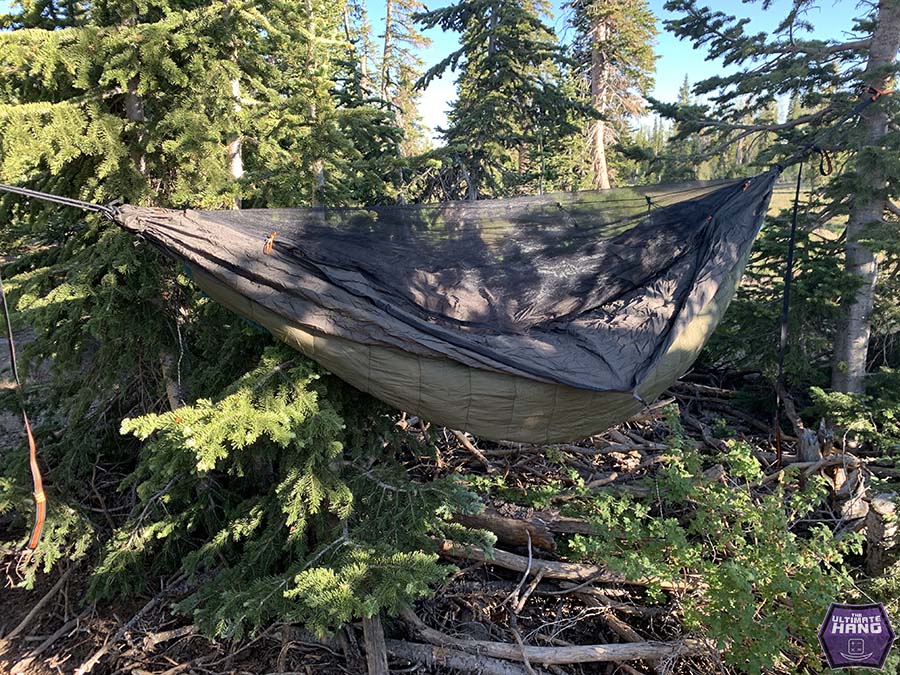OneTigris is a new company from China that came out swinging with a full assortment of budget hammock gear, including a modular jungle hammock and synthetic under quilts. I’ve had a chance to review the KOMPOUND Hammock and matching Night Protector Under Quilt for several weeks.
The hammock is small, roughly 9 x 4.2 feet, which is a little smaller, but around the same size as first-gen Hennessy Hammocks. It has a built-in, one-sided zippered bug net, mid-point tie-outs, and continuous loops on each end for suspension. The hammock comes standard with 1-inch x 10 ft daisy chain webbing straps and complementary carabiners. Lightweight zipper pulls with high-visibility cord pulls, adjustable ridgeline, and matching stitching complete the package.
The features that really stood out to me are the stuff sack and top cover. The stuff sack is not attached to the hammock and is designed to double as a ridgeline organizer. This is one of my favorite ideas that I now want on all my hammocks. Clips along the Ridgeline allow me to hang the organizer and move it along and lock it in place. Mesh pockets are big enough for a large smartphone, flashlight, and other nicknacks, while opposite is a longer zipper pocket for larger items.
The top cover is a brilliant idea. Really, I want this on a few other hammocks. Unlike most modular hammocks that require you to replace or cover a bug net with a fabric cover, the OneTigris design is a smaller fabric sheet that zips between the hammock and bug net inside to create a sort of membrane cross-section. This cover can zip down and stow in a pocket on the foot end and has clips down the middle that can lift the cover to the ridgeline for additional air flow if needed.
Besides being a tad small, I wish the top cover were a little wider so I could lay more diagonally in the hammock and maximize the space.
Overall, the hammock is well-built — above the standard mass-produced hammocks from China. The stitching is clean and straight with reinforcements in all the right places. They even use lightweight zipper pulls. I just wish it were a bit bigger.
Disclosure of material connection: The author (Derek Hansen) was provided with a free sample from the manufacturer for testing and evaluation purposes. The comments in this post (written & spoken) are of my own opinion, which I formed after personally handling the gear.


















Leave a Reply